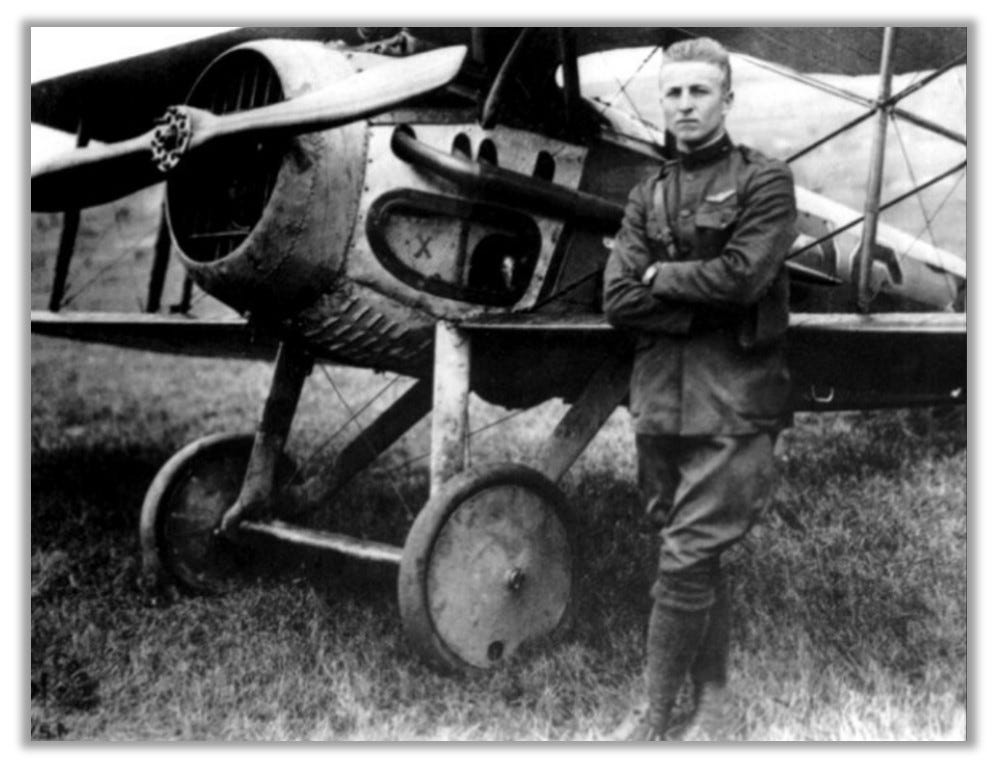At about this time in 1918, a hero engages in an action that would earn him the Medal of Honor. Frank Luke, Jr., a.k.a. the “Balloon Buster,” has been called the “most spectacular air fighter of World War I.”
“He was the most daring aviator and greatest fighter pilot of the entire war,” renowned Captain Eddie Rickenbacker said. “His life is one of the brightest glories of our Air Service. He went on a rampage and shot down 14 enemy aircraft, including 10 balloons, in eight days. . . . [No other Ace] had ever come close to that.”
Indeed, 2d Lt. Luke’s service in the U.S. Army Air Service would be brief but impressive. He enlisted in September 1917, finished training in May 1918, and shot down his first enemy balloon on September 12. His last action came on September 29.
During this brief period, he shot down four enemy airplanes and 14 balloons.
It’s important to understand the role of balloons in World War I, and how risky it was to attack one. The Germans used these balloons as observation posts, trying to get a look behind our lines. The observers in the balloons could also direct artillery on the ground, making enemy fire more accurate.
Attacks on the balloons were needed, but only the bravest pilots dared to do it.
“The hydrogen-filled balloons were expensive and of great military value,” the 944th Fighter Wing website explains. “Normally protected by heavy anti-aircraft gun batteries, there was usually a flight of pursuit planes stationed nearby. To attack a balloon was practically suicide.”
Luke’s Medal action came on September 29, 1918. He’d managed to sneak in, undetected, behind a balloon unit, taking out three of them in an astonishing 10 minutes. Unsurprisingly, those victories caught the attention of the enemy. Eight airplanes were soon in hot pursuit.
The main reason we know what happened is because about a dozen citizens of Murvaux, France, were watching the battle from below. Luke was under heavy fire, both from ground batteries and the enemy planes in the sky. It appears that his plane took too many hits, and he knew he’d have to land.
He abruptly began to descend.
“Severely wounded,” his Medal citation concludes, “he descended to within 50 meters of the ground, and flying at this low altitude near the town of Murvaux opened fire upon enemy troops, killing six and wounding as many more. Forced to make a landing and surrounded on all sides by the enemy, who called upon him to surrender, he drew his automatic pistol and defended himself gallantly until he fell dead from a wound in the chest.”
The witnesses did not know Luke’s identity, but he was identified after the Armistice and awarded a Medal of Honor.
“No one had the sheer contemptuous courage that boy possessed,” Luke’s commander concluded. “He was an excellent pilot and probably the best flying marksman on the Western Front. We had any number of expert pilots and there was no shortage of good shots, but the perfect combination, like the perfect specimen of anything in the world, was scarce. Frank Luke was the perfect combination.”
Sources can always be found on my website, here.





He never gave up. He never surrendered. He died fighting. That's a man's man.
Tough as nails...Thank you Frank Luke Jr.